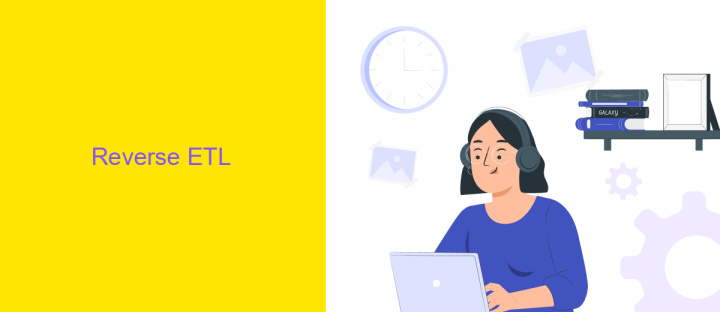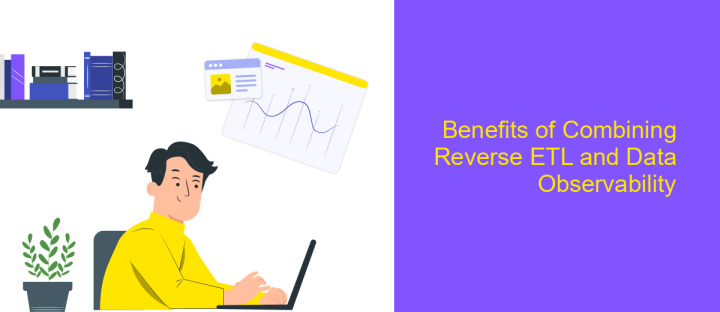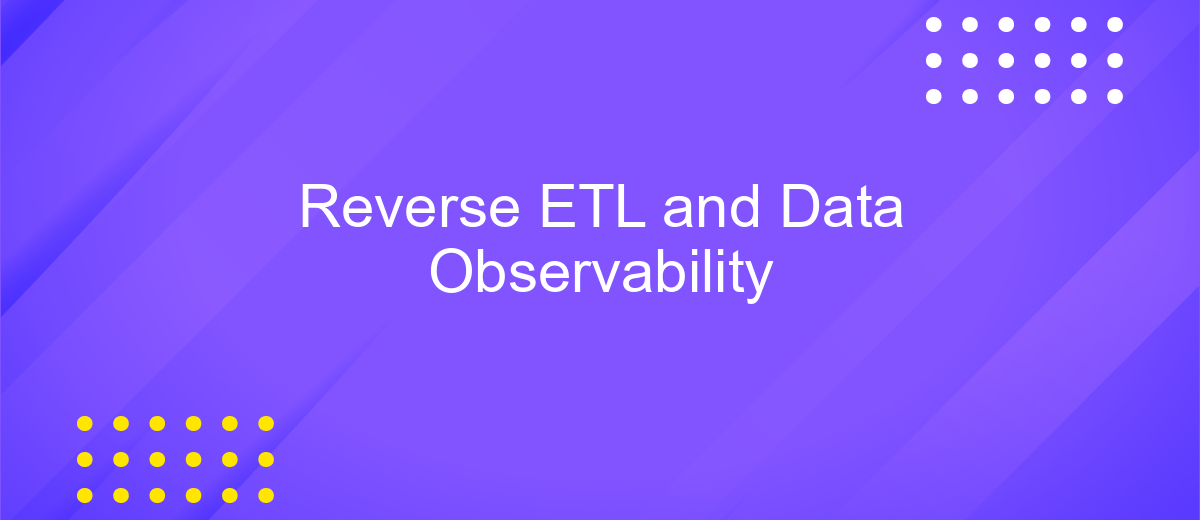Reverse ETL and Data Observability
Reverse ETL and Data Observability are transforming how businesses leverage data. Reverse ETL enables the seamless transfer of data from data warehouses to operational systems, enhancing decision-making processes. Meanwhile, Data Observability ensures the reliability and accuracy of this data by providing comprehensive monitoring and insights. Together, they empower organizations to harness the full potential of their data assets.
Introduction
In today's data-driven world, businesses are increasingly relying on data to make informed decisions. Reverse ETL (Extract, Transform, Load) and Data Observability are two crucial concepts that help organizations streamline their data processes and ensure data quality. Reverse ETL focuses on extracting data from data warehouses and loading it into operational systems, while Data Observability ensures that data pipelines are functioning correctly and data is accurate.
- Reverse ETL extracts data from data warehouses.
- Data Observability monitors data pipelines for accuracy.
- Both concepts are essential for maintaining data integrity.
By integrating tools like ApiX-Drive, businesses can automate data transfers between various platforms, ensuring seamless data flow and enhanced data observability. ApiX-Drive simplifies the integration process, allowing organizations to focus on leveraging their data for strategic insights. As a result, companies can achieve better data governance and operational efficiency, driving more informed decision-making.
Reverse ETL

Reverse ETL is a process that enables organizations to extract data from their data warehouses and operationalize it by syncing it back to their business applications. This approach allows companies to leverage their centralized data to enhance decision-making processes and streamline operations. By utilizing Reverse ETL, businesses can ensure that their teams have access to the most up-to-date and relevant information, leading to more informed strategies and actions.
One of the key benefits of Reverse ETL is its ability to integrate with various business tools seamlessly. Services like ApiX-Drive facilitate these integrations by providing an easy-to-use platform for connecting data warehouses with applications such as CRMs, marketing automation tools, and customer support systems. With ApiX-Drive, organizations can automate data flows, reduce manual data entry, and maintain data consistency across platforms, ultimately improving efficiency and data accuracy.
Data Observability

Data observability is a critical aspect of modern data engineering that ensures the health and reliability of data pipelines. It involves monitoring, tracking, and alerting on the state of data as it flows through various systems. By implementing robust data observability practices, organizations can proactively identify and resolve data issues before they impact business operations.
- Monitor data quality metrics such as completeness, accuracy, and timeliness.
- Track data lineage to understand the flow and transformations of data.
- Set up automated alerts for anomalies and data pipeline failures.
- Leverage tools like ApiX-Drive to streamline data integration and ensure consistent data flow across systems.
- Regularly audit and review data observability configurations to adapt to evolving data requirements.
Implementing data observability not only enhances trust in data but also supports data-driven decision-making. With services like ApiX-Drive, organizations can simplify the integration process and maintain seamless data operations. This proactive approach helps in maintaining data integrity and enables quick resolution of any data-related issues.
Benefits of Combining Reverse ETL and Data Observability

Combining Reverse ETL and Data Observability offers a multitude of benefits for organizations looking to maximize the value of their data. Reverse ETL enables the movement of data from data warehouses back into operational tools, allowing for real-time insights and decision-making. Data Observability ensures that data pipelines are reliable, accurate, and transparent, providing confidence in the data being utilized.
When these two powerful concepts are combined, businesses can achieve a more holistic view of their data operations. This combination facilitates seamless integration and monitoring, ensuring that data is not only moved efficiently but also remains trustworthy and actionable.
- Enhanced data quality and reliability
- Improved decision-making through real-time insights
- Streamlined data operations with seamless integration
- Increased transparency and accountability in data processes
Tools like ApiX-Drive can further enhance these benefits by simplifying the integration process. ApiX-Drive allows for easy setup of data flows between various platforms, ensuring that data is consistently accurate and up-to-date. By leveraging these technologies, organizations can unlock the full potential of their data, driving better business outcomes.
Use Cases
Reverse ETL and Data Observability offer valuable use cases for businesses aiming to optimize their data operations. One prominent use case is enhancing marketing strategies. By using Reverse ETL, companies can extract data from their data warehouses and load it into marketing tools, enabling more personalized and targeted campaigns. Data Observability ensures that the data being used is accurate and up-to-date, which is crucial for effective decision-making. For instance, ApiX-Drive can facilitate seamless integration between various data sources and marketing platforms, ensuring a smooth data flow and consistent insights.
Another significant use case is improving customer support. Reverse ETL allows for the extraction of customer data from centralized databases and its integration into CRM systems. This enables support teams to access comprehensive customer profiles and provide more efficient and personalized service. Data Observability plays a critical role here by monitoring data pipelines and ensuring data integrity. With tools like ApiX-Drive, businesses can automate these integrations, ensuring that customer data is always current and reliable, ultimately leading to improved customer satisfaction and retention.
FAQ
What is Reverse ETL?
Why is Data Observability important in Reverse ETL?
How can I automate Reverse ETL processes?
What are the common challenges in implementing Reverse ETL?
How does Reverse ETL benefit businesses?
Do you want to achieve your goals in business, career and life faster and better? Do it with ApiX-Drive – a tool that will remove a significant part of the routine from workflows and free up additional time to achieve your goals. Test the capabilities of Apix-Drive for free – see for yourself the effectiveness of the tool.

